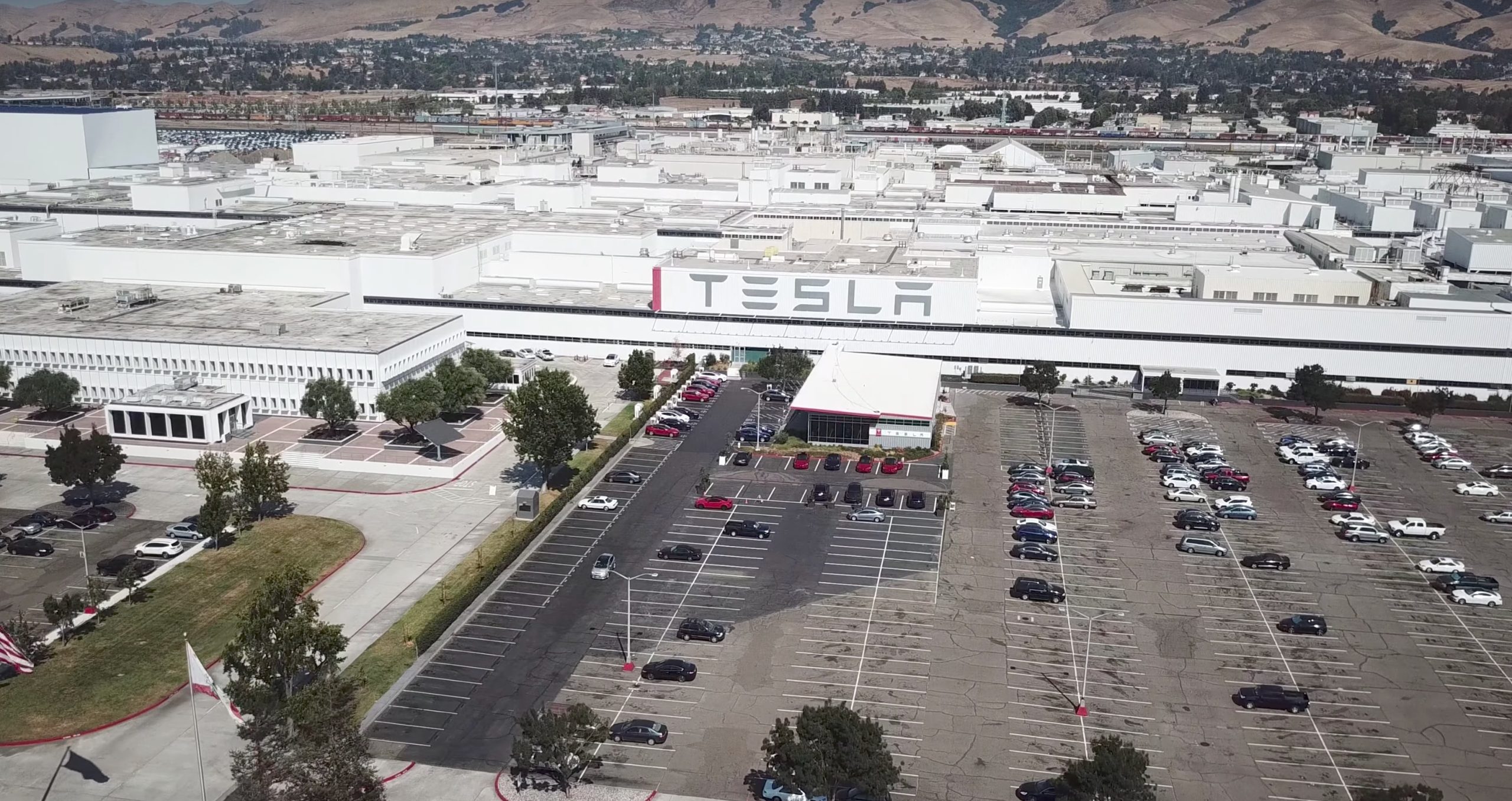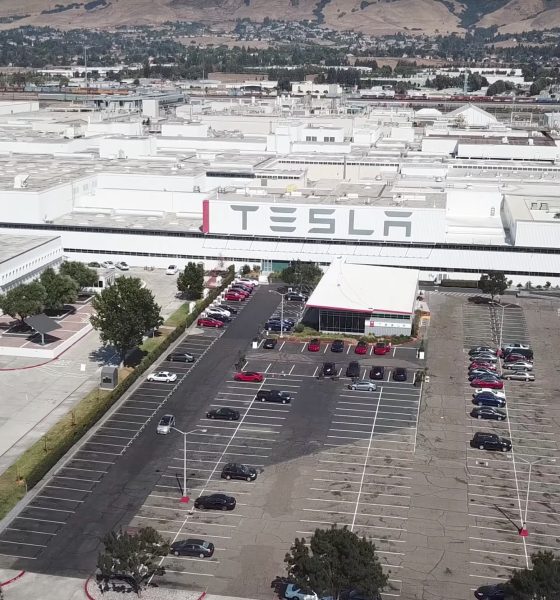

Investor's Corner
Tesla shorts on edge following $1.1 billion loss
Tesla (NASDAQ:TSLA) short-sellers are down $1.1 billion in mark-to-market losses after TSLA stock rose 9.7% on Wednesday. The surge in the electric car and energy company’s shares comes on the heels of a successful 2018 Annual Shareholder Meeting, where CEO Elon Musk expressed an optimistic outlook in the Model 3’s production and Tesla Energy’s budding energy storage business.
Tesla is currently the most-shorted U.S. equity and the most-shorted stock worldwide in the Automobile Manufacturing Sector, with 37.7 million shares shorted and $11 billion in short interest as of Wednesday, according to a recent report from S3 Partners. Over the first five months of 2018, Tesla shorts saw substantial returns, up $572 million or 5.53% in mark-to-market profits. Since May 22, however, Tesla short-sellers are down $1.7 billion in mark-to-market losses as the company’s shares rose by 16.6%, turning a profitable year into the third straight year of Tesla short-selling losses. Wednesday’s 9.7% rally generated $1.1 billion in mark-to-market losses for $11 billion of TSLA short interest.
Overall, the financial technology firm expects Tesla’s short interest to decline as some short-sellers cut their positions after incurring $1.1 billion in mark-to-market losses. Considering the conviction that has been exhibited by dedicated Tesla shorts over the years, however, analysts at S3 Partners expect that a significant number of short-sellers will still hold on to their positions.
Tesla’s long-term investors are now looking to the company’s stock reaching $350 per share as the company achieves its target of producing 5,000 Model 3 per week by the end of Q2 2018 — a milestone that Musk dubbed during the recently-held Annual Shareholder Meeting as “likely” to happen.
Wednesday’s 9.7% rally stands as Tesla’s biggest percentage gain since November 4, 2015. The stock closed at $319.50, marking the best close of the company’s shares since March 16 this year and making it the best performer on the Nasdaq 100 during Wednesday’s trading.
Apart from Musk’s optimism regarding the production numbers of the Model 3, a critical factor that appears to have resonated among Tesla’s shareholders was the company’s growing energy business. Earlier this week, Tesla CTO JB Straubel stated that the company has managed to deploy 1 GWh of energy storage worldwide to date. During the 2018 Annual Shareholder Meeting, Elon Musk noted that in less than a year, Tesla would be able to do another Gigawatt project, followed by even more growth in the years to come.
“In less than a year from now, we will do another Gigawatt (project). The rate of stationary storage deployment is going to grow exponentially. For many years to come, each incremental year will be about as much as all the preceding years, which is a crazy, crazy growth rate,” Musk said during the Annual Shareholder Meeting.
Elon Musk predicted a “short burn” after the company’s now-infamous Q1 2018 earnings call. In a series of updates on Twitter, Musk reiterated his expectation that Tesla would start seeing profits sometime in Q3 or Q4 2018, while stating that the “short burn of the century” would be coming soon. During that time, Musk noted that the deliveries of the Boring Company’s “Not-a-Flamethrowers” would come just in time. Interestingly, a handover party for the first 1,000 Not-a-Flamethrowers is set for this coming Saturday, June 9, at Los Angeles, just a few days after Tesla shorts took a $1.1 billion blow.
As of writing, Tesla stock is trading down 0.32% at $318.49 per share on Thursday’s pre-market trading.
Disclosure: I have no ownership in shares of TSLA and have no plans to initiate any positions within 72 hours.

Investor's Corner
Tesla stock closes at all-time high on heels of Robotaxi progress

Tesla stock (NASDAQ: TSLA) closed at an all-time high on Tuesday, jumping over 3 percent during the day and finishing at $489.88.
The price beats the previous record close, which was $479.86.
Shares have had a crazy year, dipping more than 40 percent from the start of the year. The stock then started to recover once again around late April, when its price started to climb back up from the low $200 level.
This week, Tesla started to climb toward its highest levels ever, as it was revealed on Sunday that the company was testing driverless Robotaxis in Austin. The spike in value pushed the company’s valuation to $1.63 trillion.
Tesla Robotaxi goes driverless as Musk confirms Safety Monitor removal testing
It is the seventh-most valuable company on the market currently, trailing Nvidia, Apple, Alphabet (Google), Microsoft, Amazon, and Meta.
Shares closed up $14.57 today, up over 3 percent.
The stock has gone through a lot this year, as previously mentioned. Shares tumbled in Q1 due to CEO Elon Musk’s involvement with the Department of Government Efficiency (DOGE), which pulled his attention away from his companies and left a major overhang on their valuations.
However, things started to rebound halfway through the year, and as the government started to phase out the $7,500 tax credit, demand spiked as consumers tried to take advantage of it.
Q3 deliveries were the highest in company history, and Tesla responded to the loss of the tax credit with the launch of the Model 3 and Model Y Standard.
Additionally, analysts have announced high expectations this week for the company on Wall Street as Robotaxi continues to be the focus. With autonomy within Tesla’s sights, things are moving in the direction of Robotaxi being a major catalyst for growth on the Street in the coming year.
Elon Musk
Tesla needs to come through on this one Robotaxi metric, analyst says
“We think the key focus from here will be how fast Tesla can scale driverless operations (including if Tesla’s approach to software/hardware allows it to scale significantly faster than competitors, as the company has argued), and on profitability.”

Tesla needs to come through on this one Robotaxi metric, Mark Delaney of Goldman Sachs says.
Tesla is in the process of rolling out its Robotaxi platform to areas outside of Austin and the California Bay Area. It has plans to launch in five additional cities, including Houston, Dallas, Miami, Las Vegas, and Phoenix.
However, the company’s expansion is not what the focus needs to be, according to Delaney. It’s the speed of deployment.
The analyst said:
“We think the key focus from here will be how fast Tesla can scale driverless operations (including if Tesla’s approach to software/hardware allows it to scale significantly faster than competitors, as the company has argued), and on profitability.”
Profitability will come as the Robotaxi fleet expands. Making that money will be dependent on when Tesla can initiate rides in more areas, giving more customers access to the program.
There are some additional things that the company needs to make happen ahead of the major Robotaxi expansion, one of those things is launching driverless rides in Austin, the first city in which it launched the program.
This week, Tesla started testing driverless Robotaxi rides in Austin, as two different Model Y units were spotted with no occupants, a huge step in the company’s plans for the ride-sharing platform.
Tesla Robotaxi goes driverless as Musk confirms Safety Monitor removal testing
CEO Elon Musk has been hoping to remove Safety Monitors from Robotaxis in Austin for several months, first mentioning the plan to have them out by the end of 2025 in September. He confirmed on Sunday that Tesla had officially removed vehicle occupants and started testing truly unsupervised rides.
Although Safety Monitors in Austin have been sitting in the passenger’s seat, they have still had the ability to override things in case of an emergency. After all, the ultimate goal was safety and avoiding any accidents or injuries.
Goldman Sachs reiterated its ‘Neutral’ rating and its $400 price target. Delaney said, “Tesla is making progress with its autonomous technology,” and recent developments make it evident that this is true.
Investor's Corner
Tesla gets bold Robotaxi prediction from Wall Street firm
Last week, Andrew Percoco took over Tesla analysis for Morgan Stanley from Adam Jonas, who covered the stock for years. Percoco seems to be less optimistic and bullish on Tesla shares, while still being fair and balanced in his analysis.

Tesla (NASDAQ: TSLA) received a bold Robotaxi prediction from Morgan Stanley, which anticipates a dramatic increase in the size of the company’s autonomous ride-hailing suite in the coming years.
Last week, Andrew Percoco took over Tesla analysis for Morgan Stanley from Adam Jonas, who covered the stock for years. Percoco seems to be less optimistic and bullish on Tesla shares, while still being fair and balanced in his analysis.
Percoco dug into the Robotaxi fleet and its expansion in the coming years in his latest note, released on Tuesday. The firm expects Tesla to increase the Robotaxi fleet size to 1,000 vehicles in 2026. However, that’s small-scale compared to what they expect from Tesla in a decade.
Tesla expands Robotaxi app access once again, this time on a global scale
By 2035, Morgan Stanley believes there will be one million Robotaxis on the road across multiple cities, a major jump and a considerable fleet size. We assume this means the fleet of vehicles Tesla will operate internally, and not including passenger-owned vehicles that could be added through software updates.
He also listed three specific catalysts that investors should pay attention to, as these will represent the company being on track to achieve its Robotaxi dreams:
- Opening Robotaxi to the public without a Safety Monitor. Timing is unclear, but it appears that Tesla is getting closer by the day.
- Improvement in safety metrics without the Safety Monitor. Tesla’s ability to improve its safety metrics as it scales miles driven without the Safety Monitor is imperative as it looks to scale in new states and cities in 2026.
- Cybercab start of production, targeted for April 2026. Tesla’s Cybercab is a purpose-built vehicle (no steering wheel or pedals, only two seats) that is expected to be produced through its state-of-the-art unboxed manufacturing process, offering further cost reductions and thus accelerating adoption over time.
Robotaxi stands to be one of Tesla’s most significant revenue contributors, especially as the company plans to continue expanding its ride-hailing service across the world in the coming years.
Its current deployment strategy is controlled and conservative to avoid any drastic and potentially program-ruining incidents.
So far, the program, which is active in Austin and the California Bay Area, has been widely successful.








